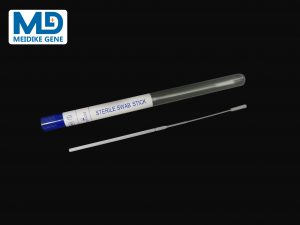تعليمات التعبئة والتغليف للمسحات البلعومية الأنفية:
واحد: استخدام مسحة أخذ عينات من الأنف 50 تعليمات
1. قم بتقدير حجم هذا المنتج اللازم لغمر العينة بالكامل (1تتطلب الأنسجة g 10 مل).
2. ضع علامة على أنبوب التجميع وأضف الكمية المقدرة لهذا المنتج.
3. قطع العينة إلى قطع بسماكة أقل من 0.5 سم بأسرع سرعة.
4. اغمر قطع الأنسجة بالكامل في المنتج في أنبوب التجميع.
5. قم بتخزين أنبوب التجميع في مكان بدرجة حرارة مناسبة. لا يمكن أن يتجاوز وقت التخزين الحد الأقصى لوقت التخزين عند درجة الحرارة تلك. إذا كنت تريد تخزينه في -20 درجة مئوية أو -80 درجة مئوية, تحتاج إلى وضع العينة عند درجة حرارة 4 درجات مئوية طوال الليل قبل نقلها إلى درجة الحرارة النهائية. ملحوظة: قبل نقل العينة إلى -20 درجة مئوية أو -80 درجة مئوية, يجب التخلص من حل الحماية. العلاقة بين درجة حرارة التخزين المشتركة والحد الأقصى لوقت التخزين هي كما يلي:
6. إزالة العينة من مكان التخزين (يجب إذابة العينات المخزنة عند -20 درجة مئوية أو -80 درجة مئوية في درجة حرارة الغرفة), واستخدام ملقط معقم لإزالة شظايا الأنسجة من المحلول الوقائي.
7. البدء فورًا في استخراج الحمض النووي الريبي (RNA) أو أي معالجة أخرى (مثل تقسيم العينة إلى أجزاء أصغر ومن ثم إعادة حفظها). ملحوظة: يمكن تجميد العينة وإذابتها بشكل متكرر عشرين مرة دون التأثير على جودة الحمض النووي الريبي (RNA) الخاص بها.
تعليق
1. لا ينصح بزراعة مسحات من البلعوم الأنفي بحثًا عن البكتيريا الشائعة, باستثناء البكتيريا الخاصة, مثل البورديتيلة السعال الديكي والنيسرية السحائية.
2. إذا كنت تشك في الإصابة بالسعال الديكي البورديتيلة, يجب عليك إخطار المختبر مسبقًا لإعداد وسيلة نقل خاصة (ريجان لوي). عندما تسمح الظروف بذلك, يمكن توفير وسط التلقيح, مستقيم
3. نقل إلى المختبر بعد التلقيح على السرير.
4. لا يمكن استخدام مسحات البلعوم الأنفي للكشف عن مسببات أمراض التهاب الجيوب الأنفية.

















